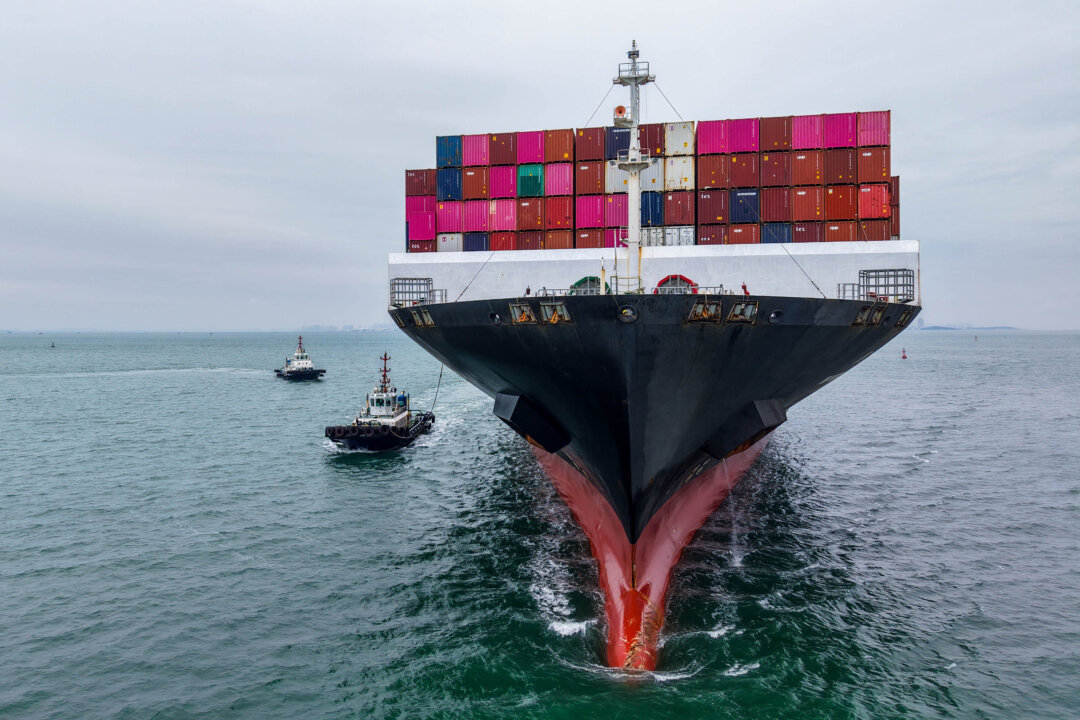
www.thegospelcoalition.org
20 Inspiring Christian Documentaries
A ton of streaming content is at our disposal these days, but precious little of it is worthwhile. Much is at best moderately amusing—or at worst, brain rot. I’m increasingly skeptical of pressing play on any new movie or series, because more often than not, it proves disappointing. Maybe you feel the same.
Thankfully, there are edifying things to stream, but sometimes it’s hard to find them. That’s why I put together this list of 20 well-made documentaries by or about Christians. They span various topics—from missions to theology to church history, and more—but each is inspiring and worth watching. Next time you have an open hour or two and want to relax with a movie, don’t bother with Netflix paralysis. Pick a movie from this list and let it enrich your faith.
American Gospel series (2018, 2019, 2025)
This series of documentary films tackles various threats to and perversions of the gospel. Coming from a Reformed perspective and featuring a who’s who of talking-head experts, the installments include American Gospel: Christ Alone (2018), American Gospel: Christ Crucified (2019), and a multiepisode series titled American Gospel: Spirit and Fire (2025). You might not agree with everything said or argued in the films, but they’re substantive and absolutely worth watching and discussing. Watch at AmericanGospel.com.
Beyond the Gates of Splendor (2004)
The title of this 2004 documentary references Elisabeth Elliot’s 1957 book, Through Gates of Splendor. The film examines the background and legacy of the five missionary martyrs killed in 1956 as they tried to bring the gospel to Ecuador’s Waorani tribes. If you enjoyed the dramatized version of the story in 2005’s End of the Spear, don’t miss this inspiring documentary. Watch for free on YouTube.
Beyond Utopia (2023)
Madeleine Gavin’s film centers on a South Korean Christian pastor, Kim Sungeun, who plays a key role on the modern “Underground Railroad” that helps North Korean defectors escape the oppressive regime. It’s a harrowing look at the plight of North Koreans today—and an inspiring example of how some Christians are stepping up to help. Rent on Amazon.
Calvinist (2017)
Released in 2017—on the occasion of the Reformation’s 500th anniversary—Les Lanphere’s documentary explores the reasons for the Reformed resurgence. Featuring R. C. Sproul, Ligon Duncan, Kevin DeYoung, Paul Washer, Shai Linne, Tim Challies, and many others, the film is also a visually engaging, effective explanation of Calvinist theology. As I wrote in my TGC review, “Calvinist’s visual storytelling does for Reformed theology what The Bible Project is doing for biblical books and themes: making it more graspable and beautiful for an increasingly image-based world.” Rent on Amazon.
A City of Light (2025)
This short documentary, produced by Christ Covenant Church in Atlanta, takes an in-depth look at church planting and missionary work in Paris, France—one of the most beautiful but most secular cities in the world. I loved how the film incorporated analysis of French history and its contemporary post-Christian culture, alongside glimpses into the good gospel work being done. It’s an inspiring, well-made film that made me instantly want to support these faithful gospel workers in the City of Light. Releases Nov. 1. Watch for free here.
Emanuel (2019)
The second film on this list from director Brian Ivie, Emanuel is a moving portrait of forgiveness after a horrific tragedy. It focuses on a handful of survivors and family members of victims of the 2015 mass shooting at Charleston’s Emanuel African Methodist Episcopal Church. As I wrote in my review, the film “rightly celebrates the beauty of forgiveness and the unique responses to suffering and hate that Christianity enables.” Rent on Amazon.
Facing Darkness (2017)
This Samaritan’s Purse documentary profiles missionary doctor Kent Brantly, who famously contracted Ebola while he was treating patients of the deadly disease during the West African outbreak in 2014. It’s a moving account of countercultural, Christlike service: going into a deadly outbreak to bring healing, risking one’s life to help others. Watch for free on Tubi.
For the Life of the World: Letters to the Exiles (2016)
This unique documentary, narrated by actor Evan Koons, aims to give Christians a wider view of what it means to be in the world but not of it. Told in seven parts, the film ponders Christian mission (What’s our salvation for?) by looking at various examples of Christianity’s relationship to culture. More engaging and creative than your average faith-based film, For the Life of the World is a great option for a small group or class to watch and discuss together. Watch for free on YouTube.
Free Burma Rangers (2020)
Part war documentary, part missionary profile of Dave and Karen Eubank, this film is a provocative and moving portrait of how the gospel motivates believers to flee comfort and run toward danger, dodging bullets and bombs to be conduits of healing and hope. Watch for free on Tubi.
From the Rising of the Sun (2025)
This 12-episode documentary series is a compelling companion piece to the book of the same name by Tim Challies and Tim Keesee. If you buy the book in any format, you’ll get a code to watch the full documentary online. The episodes follow the book’s travelogue structure, as Challies and Keesee visit 11 churches all over the world, from Fiji to Morocco to the Aleutian Islands. The documentary and book both testify to the beautiful diversity and unity of Christian worship across cultures and time zones. Watch for free with purchase of the book.
Logic on Fire: The Life and Legacy of Dr. Martyn Lloyd-Jones (2015)
One of the most influential preachers of the 20th century, Martyn Lloyd-Jones once defined preaching as “logic on fire.” This documentary unpacks that idea—and Lloyd-Jones’s life and influence—by featuring the insights of people like Kevin DeYoung, Ligon Duncan, John MacArthur, Conrad Mbewe, Justin Taylor, and Paul Washer. Rent on Amazon.
Look and See: A Portrait of Wendell Berry (2016)
Even if you’re not as much of a diehard Wendell Berry fan as I am, you’ll find much to appreciate in this tender portrait of the Christian novelist, essayist, and poet. The film isn’t just about Berry; it’s about what Berry can teach us about seeing. It’s a documentary about the poetics of seeing, noticing, and relishing the intricacies of God’s beautiful creation. Available to rent.
Luther: The Life and Legacy of the German Reformer (2017)
Another documentary released to coincide with the Reformation’s 500th anniversary, Stephen McCaskell’s film is narrated by Barry Cooper and features interviews with R. C. Sproul, Carl Trueman, Stephen Nichols, and many others. There’s no shortage of books and documentaries about Martin Luther, but Luther is especially well made and effective, featuring engaging animation, exceptional cinematography, and efficient editing. Watch for free on YouTube.
Many Beautiful Things (2015)
This documentary provides a lovely portrait of Victorian-era British artist-turned-missionary Lilias Trotter. Trotter (voiced by Downton Abbey’s Michelle Dockery) had the opportunity to become one of England’s greatest painters but chose instead to become a missionary in Algeria—where she served for 40 years until her death in 1928. Including a soundtrack by Sleeping at Last, the film is an inspiring introduction to a fascinating Christian heroine. Watch on Prime Video.
Mears: How One Woman Changed American Christianity (2025)
She’s been called “the mother of modern evangelicalism” and, by Billy Graham, “one of the greatest Christians I have ever known.” But until now, there’s never been a documentary film on Henrietta Mears. That changed earlier this year with the release of Mears, an informative and well-made film about the woman whose innovations in Christian education at Hollywood Presbyterian Church had wide-reaching influence. The film is a great introduction to a powerhouse woman in evangelical history. Rent on Amazon.
Puritan: All of Life to the Glory of God (2019)
This beautifully made documentary from Media Gratiae takes viewers from the birth of Puritanism all the way through to its influence in the present day. Directed by Stephen McCaskell and written by Barry Cooper, the film had its world premiere at The Gospel Coalition’s 2019 national conference. It features the insights of Al Mohler, John Piper, Gloria Furman, Mark Dever, and many more. Rent on Amazon.
The Riot and the Dance (2018)
If you like Planet Earth–style nature documentaries, this masterful documentary from N. D. Wilson is for you. Beautifully shot in locations all over the world, and full of theologically rich narration, the film effectively gets viewers thinking about nature not just as a source of intrigue and awe but as the handiwork of an intentional God whose artistic motifs and fingerprints reveal truths about him. Watch it as a family and worship our wonderful God! Rent on Amazon.
Show Me the Father (2021)
The first documentary film produced by the Kendrick brothers (Courageous, The War Room), Show Me the Father is a powerful examination of the fatherhood of God and the important role earthly fathers play in families and society. Often moving, the documentary narrates various “father stories”—one that includes a dramatic twist—that all point the viewer back to God’s perfect, fatherly love for us. Rent on Amazon.
Truth Rising (2025)
This new feature-length documentary is a production of Focus on the Family and the Colson Center. Featuring Os Guinness and John Stonestreet as co-narrators, the film examines our cultural moment and presents an array of heartening examples that the West is beginning to reembrace truth. Some of the many figures profiled in the film include Ayaan Hirsi Ali, Jack Phillips, Chloe Cole, and Seth Dillon of The Babylon Bee. The film presents compelling evidence that the vibe shift in Western civilization is real. Watch for free.
The Unseen Realm (2019)
Based on the influential book by Old Testament scholar Michael Heiser, this documentary is a fascinating, informative exploration of the supernatural mysteries referenced at times in Scripture, for example the “divine council” in Psalm 82:1 or the “sons of God” in Genesis 6:1–4. This 70-minute film will give you lots to think about. But it’s not merely an exercise in intellectual stimulation; it’s a film that provokes wonder and worship as we consider the deep things of God. Watch for free on YouTube.
















